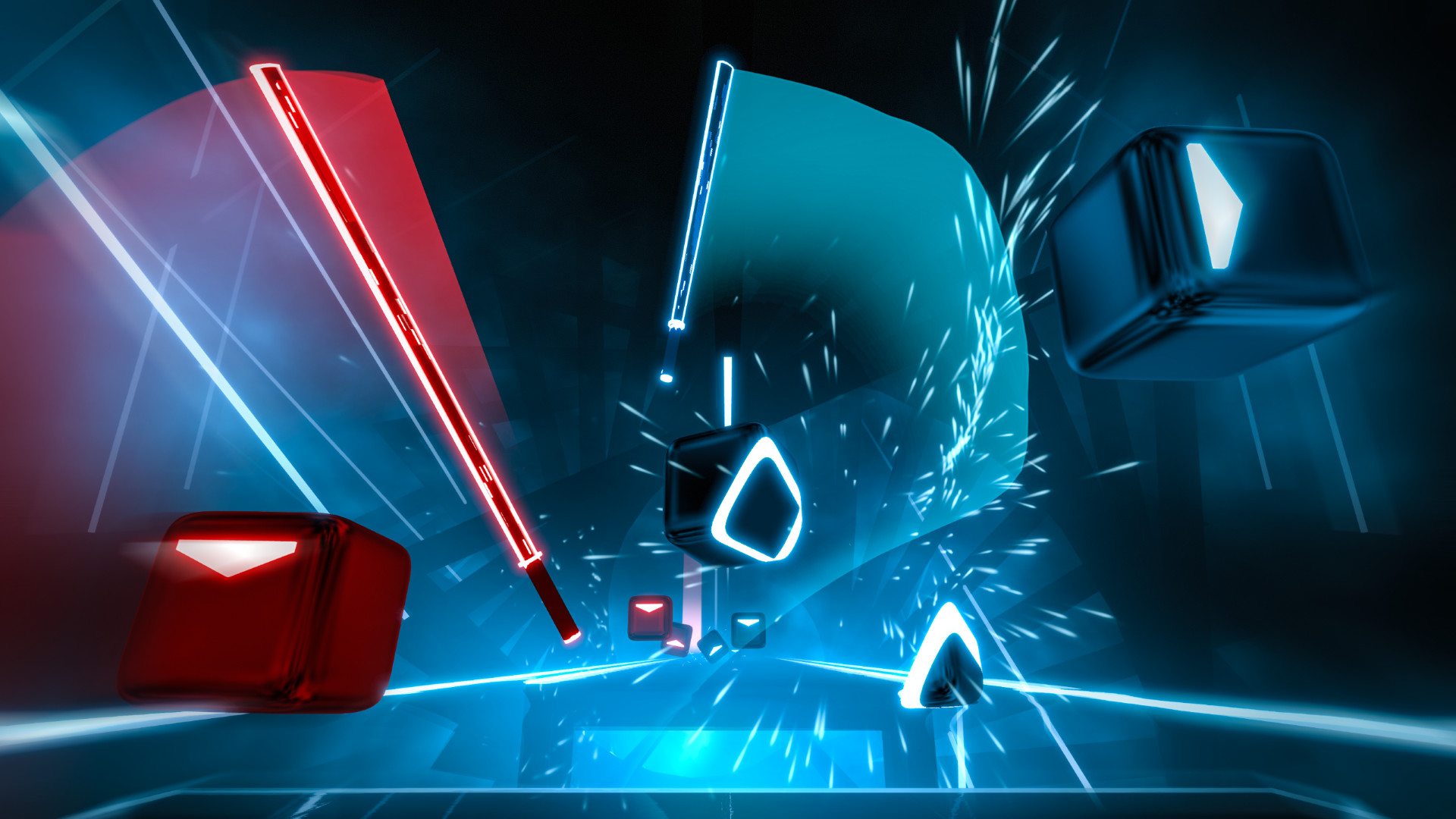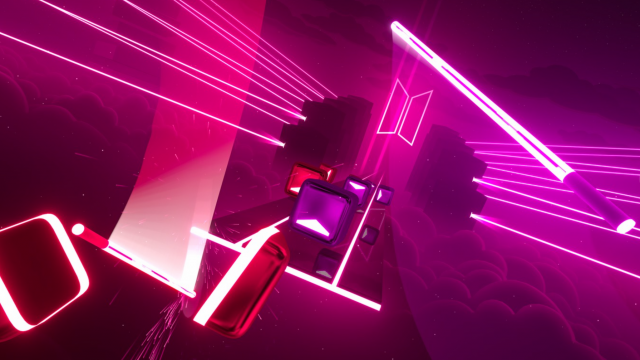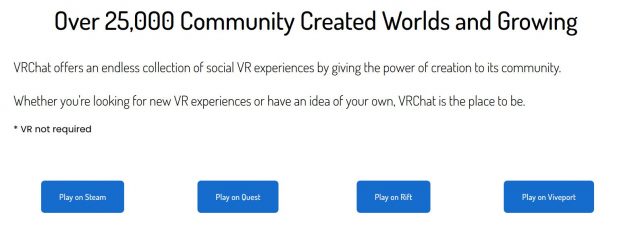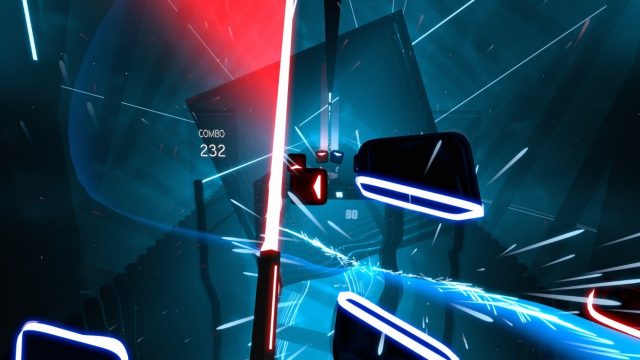Beat Saber is a VR rhythm game where you use handsets as sabers to slash boxes representing musical beats. It is a novel way to play a rhythm game, combining the dynamism of dance dance revolution and the thrill of traditional rhythm games like cytus/osu into a futuristic VR world. You can play it versus friends or random opponents remotely or you can strive to break your personal records. There are multitudes of popular genres and volumes of music to play such as EDM, Pop, Rock, K-pop, J-pop.
One reason Beat Saber is engaging is that the gameplay is satisfying and immersive. Good songs definitely help in engaging the players and having to move the sabers to the beat involves a large part of the body, immersing the player in the rhythm. As the hit boxes fly towards the player, it captures all the attention and senses of the player, leaving the player in a world of its own.

Another reason is that the songs are kept up to date by open source creators who map new songs in addition to the songs released on Beat Saber. Being able to play songs that are recent keeps the gameplay fresh, especially for people who have their favorite artists in it.
The graphics and design of the user interface and game objects are extremely well-polished, providing a high quality feel and pleasant user experience. The act of slicing the hit boxes with the saber is highly satisfying as there is responsive visual and audio feedback. Its futuristic, Blade Runner-ish neon theme helps to avoid the pain of animating realistic elements that can appear out of place, impractical or unbelievable in a modern, realistic game world. It feels premium and with the price you pay for the game, inclusive of all the songs available online, it is a great buy.

On the other hand, a feature that needs to improve is recovery from errors. Sometimes the headset might disconnect or have a faulty connection which leads to glitching avatars and the game might continue running. A good UX feature to add is pausing the game and informing the user to perform some troubleshooting. This can prevent undesirable experiences with losing game progress.
🙂







